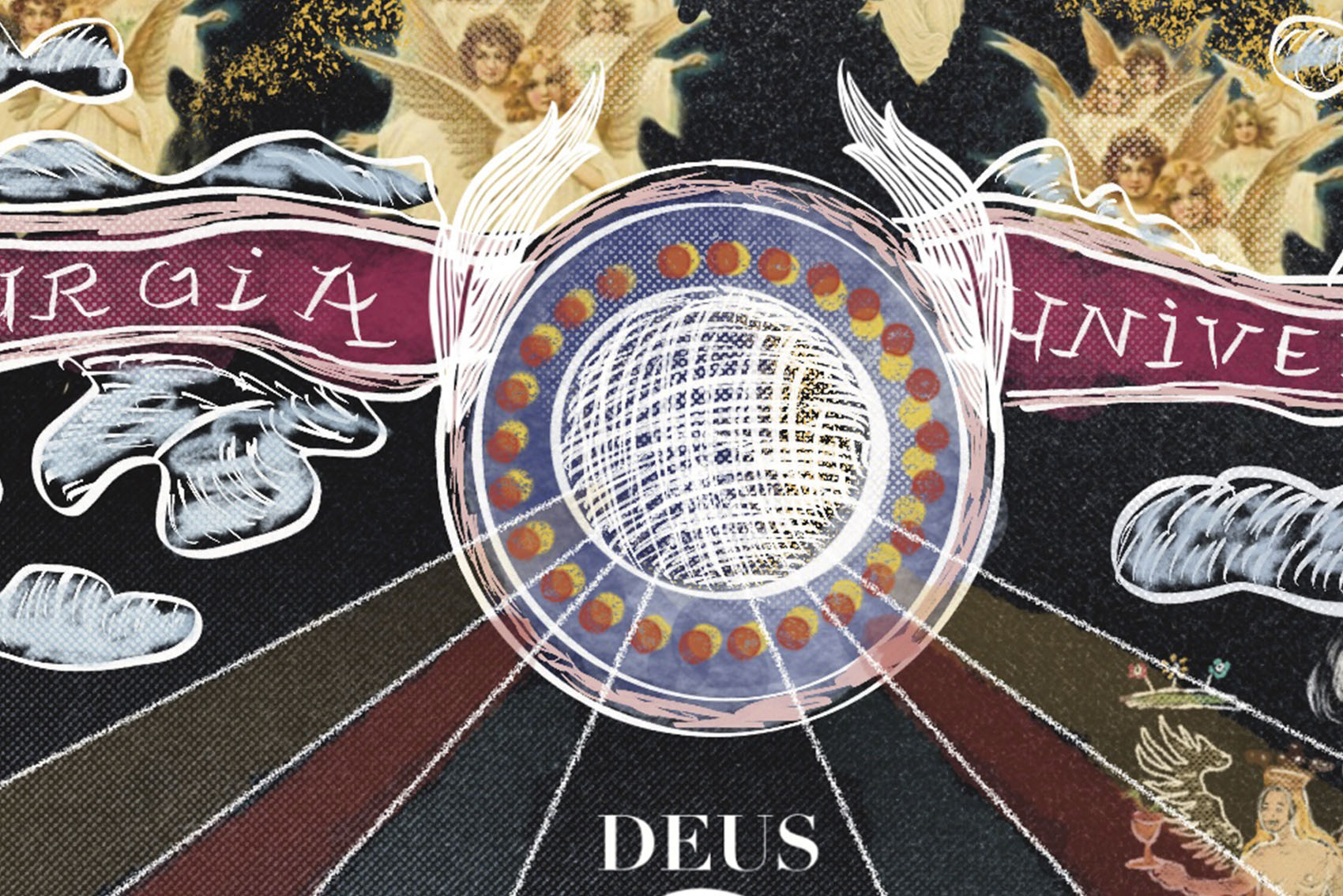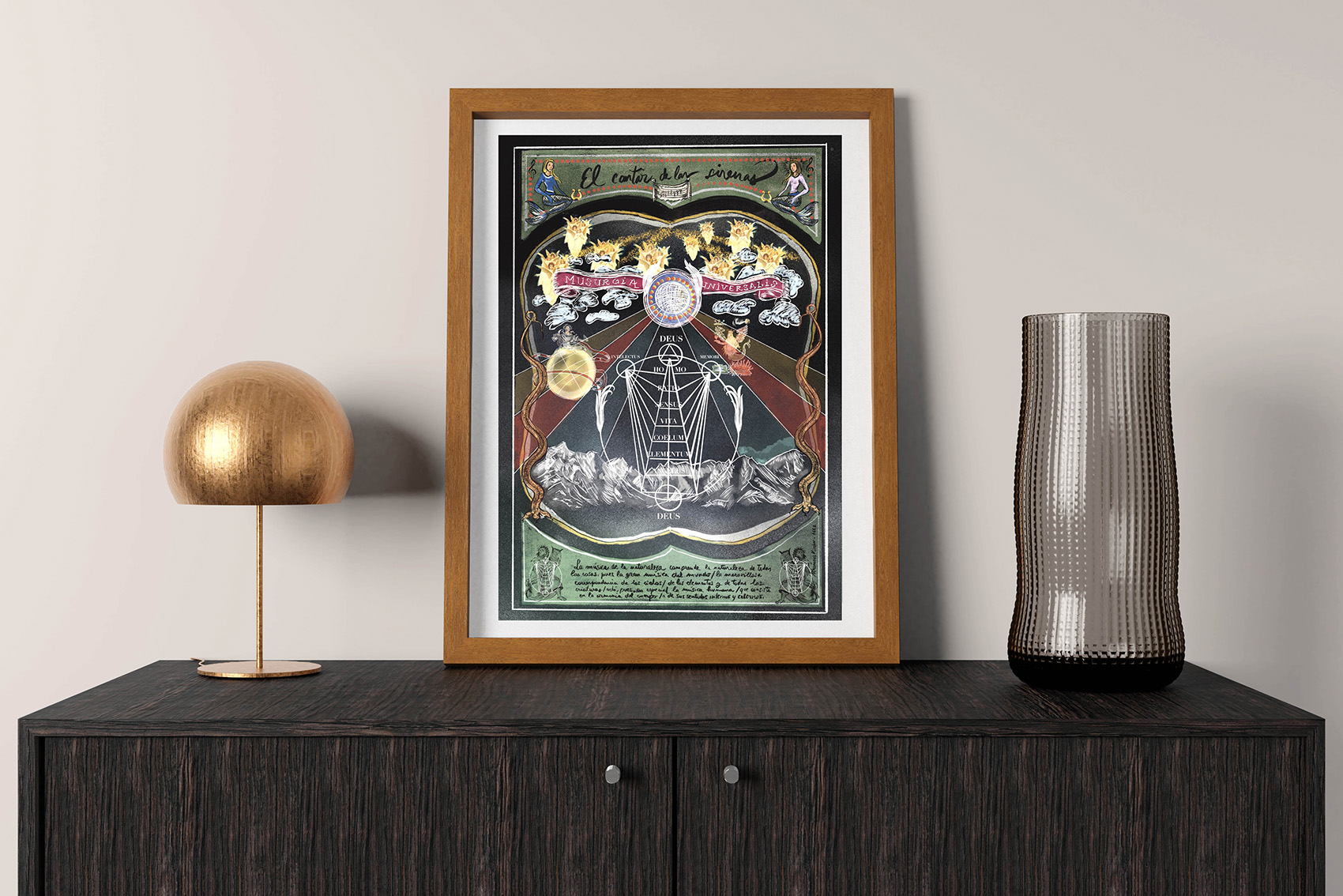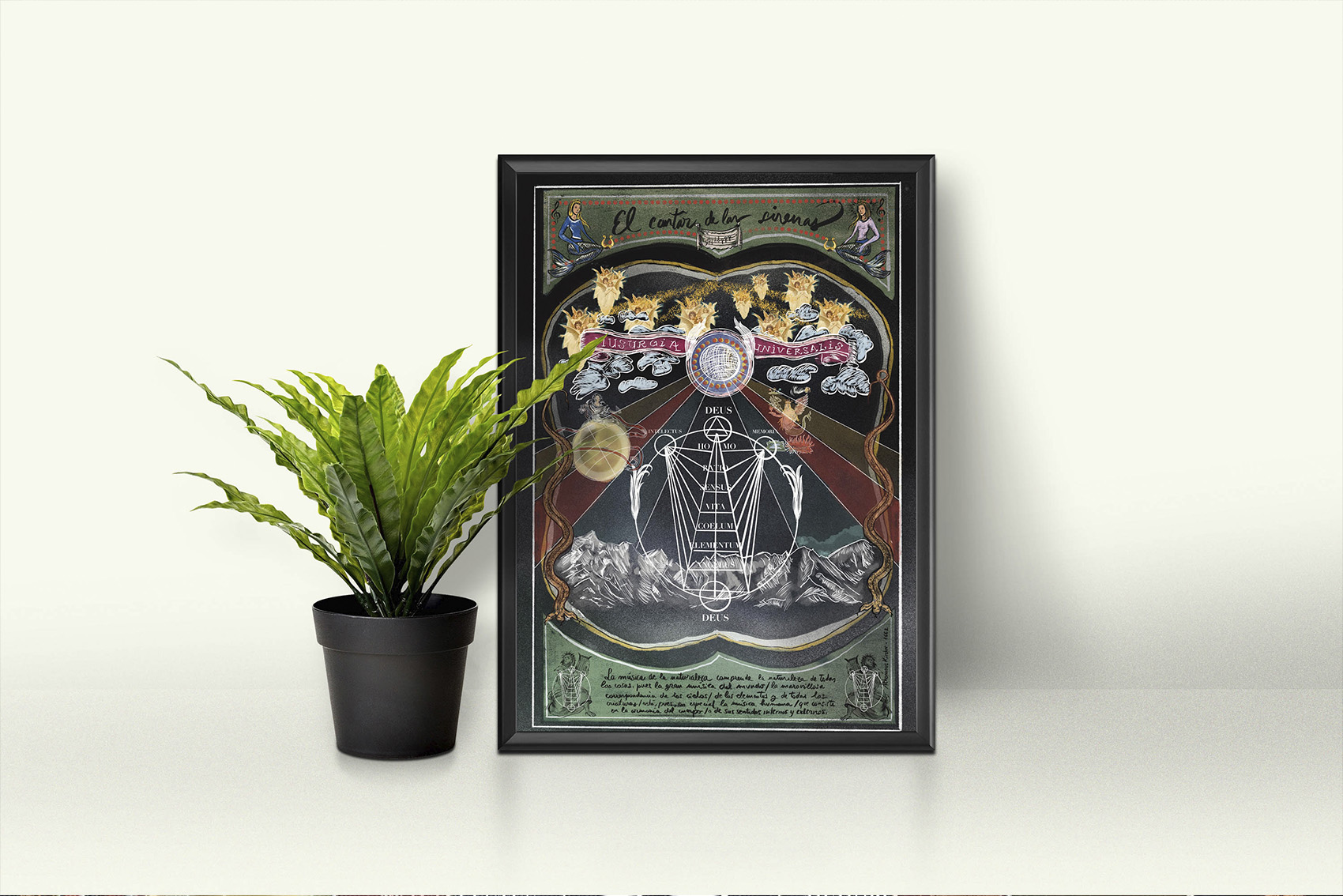THE SONG OF THE SIRENS
“The music of nature understands the nature of all things / (…) it is, then, the great music of the world / the wonderful correspondence of the heavens / of the elements and of all creatures / it is, therefore, in special human music / which consists in the harmony of the human body / or its internal and external senses. »
(Athanasius Kircher, Musurgia universalis, 1662)
The song of the sirens, also known as the harmony of the spheres, has meant the starting point to elaborate this work and leave my particular version of the events that take place there.
Graphic and symbolic composition.
I must warn the viewer that some of the drawings that appear have been taken from different sources and that they are not properly the result of my imagination. My task has consisted in decontextualizing them from their original state, modifying and distorting them to such an extent that they gave the graphic set a subjective version of events. Likewise, throughout this assembly process I have not hesitated to distill some flirty inaccuracies in some of the strokes. This has represented for me the power to calligraphy a stamp, characterized by its own and inescapable identity to remove the graphic part from being a simple indiscriminate copy of the originals. Parallel to all this merriment, I have tried to weave together a story, whose narrative would give meaning to all this unbalanced graphic balance.
Content
In the upper part, accompanying the title, we can find two mermaids, a symbol of seduction, femininity and also related to the capacity for persuasion. In his hands, a lyre; the instrument with which Pythagoras offered his students awareness and knowledge. These sirens, each one adjusted to one side, emit their song, capable of taking our consciousness to another temporal space. Your intention is clear.
Floating, under the song of the sirens, we perceive the distant echo of divine music, coming from the nine choirs of angels. Also propped up in that same section we find some clouds, almost decomposed and amorphous that symbolize uncertainty, in addition to assigning something mysterious and spiritual to this context. They look out into an abyss, and they do it in a shameless way to display with their heavenly breath the great label: «Musurgia universalis», the work of A. Kircher and that together with the figure of Mario Pérez Ruiz have led me to make this job.
At the center of all this angelic celebration, an eye that I have wanted to interpret in the least orthodox way and that rises up there, attentive and omnipresent, stages the divine providence that watches over humanity. Rays come out from within and bathe the empyrean sky with their light.
Left side. A sphere, whose representation is that of a distant echo produced by divine music and that descends from the highest (the nine angelic choirs), singing the Roman Canon Micheli or Canon Angelicus of 36 voices. That sound will be blurred in the immensity. On the other side we find a cosmic mermaid, wandering in that space and symbolizing the four elements: earth, water, air and fire. In turn, this allegorical figure also represents cosmic harmony. What is above is like what is below.
The diagram that we can find in the center of the illustration is what some philosophers in ancient times considered as the world in which a perfect harmony reigned, with what they came to say that from the earth to the heavens there was a perfect octave. (A. Kircher, Musurgia universalis).
The whole is supported on mountains, but without touching them, without damaging them. From its heights the qualities of the natural order are offered, of a harmonious and eternal superior order …
Two descending snakes (on each side) act as a lock and preserve the entire sequence that occurs in the painting. They also remind us of our connection to the world and that we are part of a cosmos where we have our own destiny.
In the lower stratum, as an indivisible part of this entire exercise, I have not hesitated to sculpt with my own handwriting the phrase that has led me to configure this story: “The music of nature comprises the …
Two men nailed at opposite angles and immersed in the contemplation of the entire cosmic complex sound their lyres in an imperishable way. If our soul has lost its harmony, its music can return us to the initial state of unity in which it again resonates harmoniously with the Universe. Thank you.
The purpose of music is to generate and move the human affections.
EL CANTAR DE LAS SIRENAS
“La música de la naturaleza comprende la naturaleza de todas las cosas/ (…) es, pues, la gran música del mundo/ la maravillosa correspondencia de los cielos/ de los elementos y de todas las criaturas/ está, pues, en especial la música humana/ que consiste en la armonía del cuerpo humano/ o de sus sentidos internos y externos.”
(Athanasius Kircher, Musurgia universalis, 1662)
El cantar de las sirenas, también conocido como la armonía de las esferas a significado el punto de partida para elaborar el presente trabajo y dejar impresa mi particular versión sobre los acontecimientos que allí suceden.
Composición gráfica y simbólica.
Debo advertir al espectador que algunos de los dibujos que aparecen han sido extraídos de diferentes fuentes y que no son propiamente el resultado de mi imaginación. Mi tarea ha consistido en descontextualizarlos de su estado original, modificarlos y distorsionarlos hasta tal punto que, otorgasen al conjunto gráfico una versión subjetiva de los hechos. Así mismo, durante todo este proceso de ensamblaje no he dudado en destilar algunas imprecisiones coquetas en algunos de los trazos. Esto ha representado para mí el poder caligrafiar un sello, caracterizado por una identidad propia e ineludible para alejar la parte gráfica de ser una simple copia indiscriminada de las originales. Paralelamente a todo este jolgorio he tratado de hilvanar una historia, cuya narrativa dotase de un sentido a todo este desequilibrado equilibrio gráfico.
Contenido
En la parte superior, acompañando al título podemos encontrarnos dos sirenas, símbolo de la seducción, la feminidad y también relacionadas con la capacidad de persuasión. Entre sus manos, una lira; el instrumento con el que Pitágoras ofrecía a sus alumnos sensibilización y conocimiento. Estas sirenas, cada una, ajustada a uno de los lados emiten su canto, capaz de llevar nuestra conciencia a otro espacio temporal. Su intención es clara.
Flotando, bajo el cántico de las sirenas percibimos el eco lejano de una música divina, proviniente de los nueve coros de ángeles. Apuntaladas también en esa misma sección nos encontramos con unas nubes, casi descompuestas y amorfas que simbolizan la incertidumbre, además de asignar a este contexto algo misterioso y espiritual. Estas se asoman a un abismo, y lo hacen de una manera descarada para desplegar con su aliento celestial el gran rótulo:“Musurgia universalis”, obra de A.Kircher y que junto a la figura de Mario Pérez Ruiz me han llevado a realizar este trabajo.
En el centro de todo este festejo angélico, un ojo que he querido interpretar de la manera menos ortodoxa y que se aúpa allá en lo alto, atento y omnipresente escenifica la divina providencia que vela por la humanidad. Desde su interior se despiden unos rayos que bañan con su luz al cielo empíreo.
Lado izquierdo. Una esfera, cuya representación es la de un eco lejano producido por la música divina y que desciende desde lo más alto (los nueve coros angélicos), cantando el Canon Romano Micheli o Canon Angelicus de 36 voces. Ese sonido quedará difuminado en la inmensidad. En el otro lado nos encontramos con una sirena cósmica, que vaga en ese espacio y que simboliza los cuatro elementos: tierra, agua, aire y fuego. A su vez esta figura alegórica también representa la armonía cósmica. Lo que está arriba es como lo que está abajo.
El diagrama que podemos encontrar en el centro de la ilustración es lo que algunos filósofos en la antigüedad consideraban como el mundo en el que reinaba una armonía perfecta, con lo que venían a decir que desde la tierra a los cielos había una octava perfecta. (A.Kircher, Musurgia universalis).
El conjunto queda sustentado sobre unas montañas, pero sin tocarlas, sin dañarlas. Desde sus alturas se ofrecen las cualidades del orden natural, de un orden superior armónico y eterno…
Dos serpientes que descienden (a cada uno de los lados) ejercen de cerrojo y preservan toda la secuencia que se sucede en el cuadro. También nos recuerdan nuestra conexión con el mundo y de que formamos parte de un cosmos donde tenemos nuestro propio destino.
En el estrato inferior, como parte indivisible de todo este ejercicio no he dudado en esculpir con mi propio puño y letra la frase que me ha llevado a configurar esta historia: “La música de la naturaleza comprende la …
Dos hombres enclavadas en ángulos opuestos y sumidos en la contemplación de todo el complejo cósmico hacen sonar sus liras de forma imperecedera. Si nuestro alma ha perdido su armonía, su música puede devolvernos al estado inicial de unidad en el que de nuevo resuene armónicamente con el Universo. Gracias.
La finalidad de la música es la de generar y mover los afectos del hombre.








